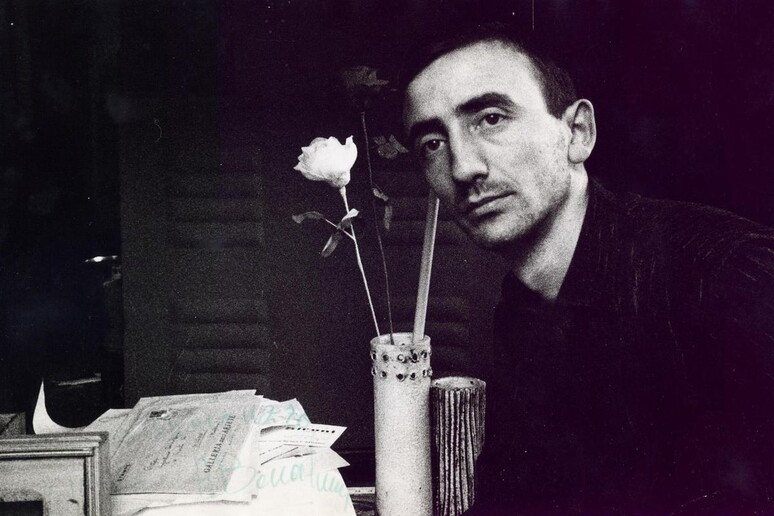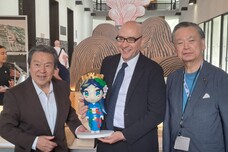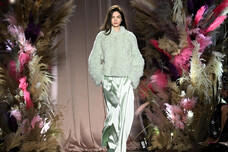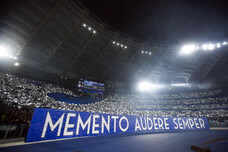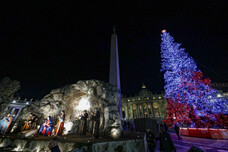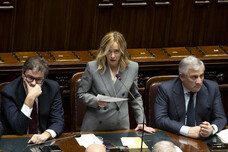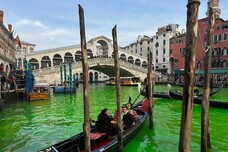A broad survey of the work of
Conceptual artists Sol LeWitt, Alighiero Boetti and Agostino
Bonalumi will be showcased at an exhibit opening on September 6
in the northern Italian city of Pordenone.
The show will wrap up on November 9.
Art movements from the 1960s and 1970s will star at the
Sagittaria Gallery of the city's Centro Iniziative Culturali
with 140 lithographs and silk-screen prints by the three leading
artists, selected from the over 1,200 graphic artworks which are
part of the permanent collection of the Museo Casabianca in
Malo, near Vicenza.
The show ''LeWitt Bonalumi Boetti. Edizioni di grafica del
Museo Casabianca di Malo'' also gives an interesting insight
into the history and activity of the museum which debuted in
1978, when art collector Giobatta Meneguzzo decided to open his
vast collection to the public and the Morandi Bonacossi family
offered their 18th century home as location.
The museum hosts one of Italy's most important collections
of art from the 1960s through the 1990s with over 1,200 works by
700 leading artists including Alberto Burri, Lucio Fontana,
Piero Manzoni, Enrico Castellani, Robert Rauschenberg, Andy
Warhol, Christo, Mario Schifano, Jannis Kounellis, Giulio
Paolini and Michelangelo Pistoletto.
Only about 200 works are on display at the museum while the
rest of the permanent collection is available for loans aimed at
divulging conceptual art and its emphasis on ideas - also
through the narrative of serial projects - over a physical
product.
The exhibit opening in Pordenone in particular showcases
key productions selected by Meneguzzo with 42 works by LeWitt,
16 by Bonalumi and 83 by Boetti.
US artist Sol LeWitt (1928-2007) helped establish
Conceptualism and Minimalism as dominant movements of the
post-war era.
His deceptively simple geometric sculptures and drawings,
his boldly coloured wall paintings and graphic art established
him as a leading modern American artist.
LeWitt turned art into basic shapes - quadrilaterals,
spheres and triangles - a few colours - blue, black, yellow and
red - and different types of lines organized according to
specific ideas and projects which followed or defied logic.
His mural-sized works sometimes took a number of people to
execute and the artist always granted his team leeway in the
belief that the input provided by others was part of art,
enabling people to participate in the creative process.
The work of Italian painter and sculptor Agostino Bonalumi
(1935-2013), a fixture of Milan's art scene from the 1950s, is
represented by the graphic edition Italian Diary 1970 and 16
silk-screen prints.
This gives an insight into the production of the artist
known for his idea of ''painting-objects'', three-dimensional
works in-between canvases and sculptures characterized by a
minimalist aesthetic.
Another Italian artist, Alighiero Boetti (1940-1994) -
originally a member of the group of Italian experimental artists
gathered under the name Arte Povera - is present with
lithographs which are part of the Insecure Nonchalant 1966-1975
anthology of works carried out during that key decade for
Italian and European art.
Initially drawn to the Arte Povera movement in the
mid-1960s, Boetti later backed away describing their work as too
''baroque'' and commercially ambitious.
The artist, whose influences included Marcel Duchamp and
industrial culture, broke away from group work to focus on
extensive travels that would take him to East and Central Asia,
Africa, Latin America and the US, turning him into a prototype
of the globetrotting artist.
His work vied to cut through cultural differences and pit
order and disorder against one another.
ALL RIGHTS RESERVED © Copyright ANSA
